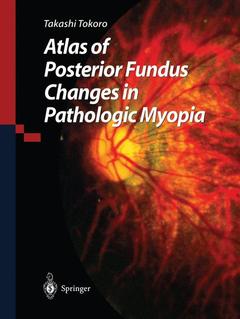Description
Atlas of Posterior Fundus Changes in Pathologic Myopia, Softcover reprint of the original 1st ed. 1998
Author: Tokoro Takashi
Language: English
Subject for Atlas of Posterior Fundus Changes in Pathologic Myopia:
Keywords
angiography; classification; development; diagnosis; distribution; membrane; microscopy; research; retina
Approximative price 52.74 €
In Print (Delivery period: 15 days).
Add to cart
Publication date: 09-2011
203 p. · 21x27.9 cm · Paperback
203 p. · 21x27.9 cm · Paperback
Description
/li>Contents
/li>Comment
/li>
Pathologic myopia that is due to axial elongation causes thinning of the retina and choroid, especially in cases of posterior staphyloma. The result of this myopia is the development of various kinds of chorioretinal atrophy in the posterior pole, with a gradual progression of the atrophic changes extending over several decades. Until now, studies of atrophic lesions and their clinical course have been incomplete, and diagnostic standards and classification of chorioretinopathy have been unclear. The Atlas of PosteriorFundus Changes in Pathologic Myopia discusses these and other important questions on the basis of long-term observation and research. A major feature of the book is the presentation of many case studies, with generous use of full-color photographs to show in detail the course of fundus changes. The atlas is valuable resource not only for ophthalmologists interested in myopia but for optometrists, opticians, and medical students.
Preface.- Acknowledgments.- 1 Criteria for Diagnosis of Pathologic Myopia.- 2 Methods of Examining the Posterior Pole of the Fundus.- 2.1 Indirect Binocular Microscopy.- 2.2 Slit Lamp Biomicroscopy.- 2.3 Fundus Photography.- 2.4 Fundus Angiography.- 3 Types of Fundus Changes in the Posterior Pole.- 3.1 Tessellated Fundus and Crescent.- 3.2 Diffuse Chorioretinal Atrophy (D).- 3.3 Patchy Chorioretinal Atrophy (P).- 3.4 Macular Hemorrhage (H).- 4 Explanatory Factors of Chorioretinal Atrophy.- 4.1 Percentage of Chorioretinal Atrophy in Each Age Group.- 4.2 Percentage of Eyes with Chorioretinal Atrophy in Each Axial Length Group.- 4.3 Percentage of Chorioretinal Atrophy With or Without Posterior Staphyloma.- 5 Visual Acuity and Chorioretinal Atrophy.- 5.1 Distribution of Visual Acuity and Axial Length.- 5.2 Percentage of Diffuse Chorioretinal Atrophy by Visual Acuity.- 5.3 Percentage of Patchy Atrophy by Visual Acuity.- 5.4 Percentage of Eyes with Macular Hemorrhage.- 5.5 Visual Acuity and Area of Peripapillary Atrophy.- 6 Progression of Chorioretinal Atrophy in Cases of Long-Term Observation.- 6.1 Diffuse Chorioretinal Atrophy.- 6.2 Patchy Atrophy.- 6.3 Choroidal Neovascular Membrane.- 7 Progression of Fundus Changes in the Posterior Pole.- 7.1 Classification of Stage of Fundus Change in the Posterior Pole.- Appendix: Relationship Between Fundus Changes in the Posterior Pole and Visual Acuity.- A.1 Factors That Can Explain the Present Visual Acuity.- A.2 Prognosis of Visual Acuity According to Multivariant Analysis by Quantification II.- References.- Cases of Chorioretinal Atrophy.- Diffuse Chorioretinal Atrophy Cases 1–15.- Lacquer Crack Lesions and Simple Bleeding Cases 16–23.- Patchy Chorioretinal Atrophy Cases 24–37.- Myopic Choroidal Neovascularization (Fuchs’ Spot) Cases 38–52.
Presenting of more than 50 different cases studies * Generous use of full-color photographs to show in detail the course of fundus changes
© 2024 LAVOISIER S.A.S.
These books may interest you

Atlas of Pathologic Myopia 189.89 €

Atlas of Pathologic Myopia 137.14 €

Myopia and Glaucoma 73.84 €

